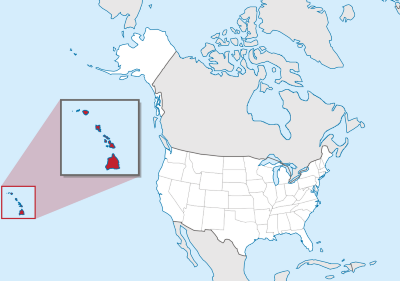Here you’ll find the largest list with Hawaii hosting reviews. We’ve listed all Hawaii web hosting providers with our UNCENSORED review and that of users.

Quick Facts
Internet Speed: 30 Mbps downlink; 4.4 Mbps uplink
Population: 1.44 million
Internet Coverage: over 75% of residents
Main Internet services: Cable, DSL, Fiber
Main Internet Service Providers: Time Warner Cable, Hawaiian Telcom
Colocation Datacenters: 5
Colocation Market: Undeserved
Internet in Hawaii
According to Akamai.com, the average downlink Internet speed in Hawaii is 30 Mbps and the average uplink speed is 4.4 Mbps.
In 2016, the population of Hawaii was approximately 1.44 million. More than 75% of residents have access to the Internet, especially broadband connections.
Main Internet services provided in Hawaii are as follows:
– Cable – over 90% coverage
– DSL – 89% coverage
– Fiber – less than 50% coverage
Main Internet Service Providers established in Hawaii are the following:
– Time Warner Cable (Cable) – 92% availability
– Hawaiian Telcom (DSL) – 90% availability
– Hawaiian Telcom (Fiber) – 60% availability
Gigabit Internet in Hawaii
Gigabit Internet services are largely available in Hawaii, as demonstrated by the very high penetration percentage of 45%. Gigabit Internet is currently provided by Hawaiian Telcom, but in select areas, other ISPs may provide it, too. Thanks to the fact that Hawaii is a very small island located in the Pacific Ocean, it was possible to roll out the necessary fiber infrastructure to support gigabit speeds without incurring many costs.
Colocation Datacenters in Hawaii
According to datacentermap.com, there are currently 5 colocation datacenters located in Hawaii. Most datacenters are established in Honolulu (4), while the rest are located in Kapolei (1).
In Honolulu, prominent colocation providers consist of the following:
– tw telecom
– DR Fortress, LLC
– Systemmetrics
– Servpac Inc.
Prominent Colocation Providers – DR Fortress
One of the largest colocation providers established in Hawaii is DR Fortress. This company owns a facility built in 2001, which was renewed in 2007 so as to double the available colocation space, to a total of 20,000-square-foot capacity. The datacenter is conveniently located close to the Honolulu International Airport, as well as other major freeways for easy access.
Services provided by this facility include:
– rental of rooms, cages, footprints, racks, and diverse enclosures
– hosting of individual servers
– dedicated servers
– virtual servers
– office space
Amenities offered are as follows:
– UPS Power Equipment
– Diverse Diesel Generators
– State-of-the-art Air Conditioning System
– Automatic Fire Suppression
In addition to these amenities, the datacenter also offers carrier-neutrality, with on-premise access to Hawaii’s largest collection of Tier 1 and 2 carriers, including but not limited to AT&T, Hawaiian Telcom, IP Access, Pacific LightNet, Qwest, etc. Cross connects are managed by DRFortress between customers and network providers in the facility.
Colocation Industry in Hawaii
Hawaii is not regarded as a prominent colocation market, mainly due to the isolation of the state in the North Pacific Ocean. However, the market has seen moderate growth in comparison with preceding years, as demonstrated by the local presence of some colocation providers that also exist on the mainland, such as tw telecom.
Advantages for Colocation
Advantages for colocation consist of the following:
– the state’s small size, which helps reduce latency significantly
– currently high vacancy rates, due to lack of consistent demand
– developed technical infrastructure in most areas
Disadvantages for Colocation
Disadvantages for colocation are as follows:
– Hawaii exhibits the highest costs of electricity in the U.S. – 89.72% higher than the national average.
– Very high risk for natural disasters, notably floods, hurricanes, tsunamis, lava flows, and even earthquakes
– Unhealthy competition in this market

